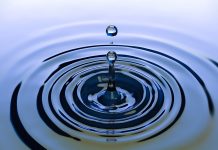
Eating Jell-O (gelatin is the basic ingredient) or unflavored gelatin does not strengthen nails. Nails are composed of protein with a high sulfur content. All protein you eat is broken down and circulates in your body protein pool (as amino acids) that is used to build and repair muscles, organs and other protein structures like hair and nails. (By the way, excess protein is stored as body fat.)
Nail strength seems to be more affected by environmental damage (i.e. any work that hits the end of the nail like housework, dishwashing or gardening), trauma to the nail (slamming it in a door) or some prescription drugs (steroids). People tend to use nails as tools which increases breakage and can lead to separation of the nail from the bed below which will show up as a white line under the tip of the nail. Nails are ten times more porous than skin and can become chapped (dry) which can increase breakage. Increased exposure to water (dishwashing, cooking, and swimming) does increase chapping of nails. So, protect your hands and nails when washing dishes. While nail polish and artificial nails may tend to superficially protect nails, there doesn’t seem to be a problem with nail products other than irritation or allergy to some chemicals in polish, polish remover and glue (formaldehyde, acetone, and methacrylate respectively).
Infants tend to have very thin nails that can be torn rather than cut. Fingernails tend to thin with age as nail growth slows in senior populations, but toenails tend to get thicker in seniors.
Nails which are keratin-based rigid proteins are comprised of magnesium, calcium, iron, zinc, sodium, and copper. Fingernails can reflect some nutrient levels though. If a person’s nail bed (skin under the exposed nail) is spoon shaped (depressed in the middle like a spoon) or pale rather than pink, it can reflect low iron in the blood (hemoglobin). Nails can develop side to side ridges (bows ridges) because of fever, inflammation in the body or a short-term illness (acute). Fine longitudinal ridges from cuticle to nail tip tend to develop with age and are not significant. Protein malnutrition will affect nail growth and health since it is the building material that comprises nails. Biotin deficiency can be seen in nails (also as reddened skin) though it is extremely rare. There are no Recommended Dietary Allowances for biotin as it is present in many foods throughout the food chain. Other than that, once damaged, a nail takes approximately 6 to 9 months to grow from the cuticle (growing end) to the tip of a person’s finger where it can be trimmed off. Other nail changes like white lines in the nail occur because of damage to the nail base when pushing back the cuticle or an abnormal hardening (keratinization) of the nail during formation.


